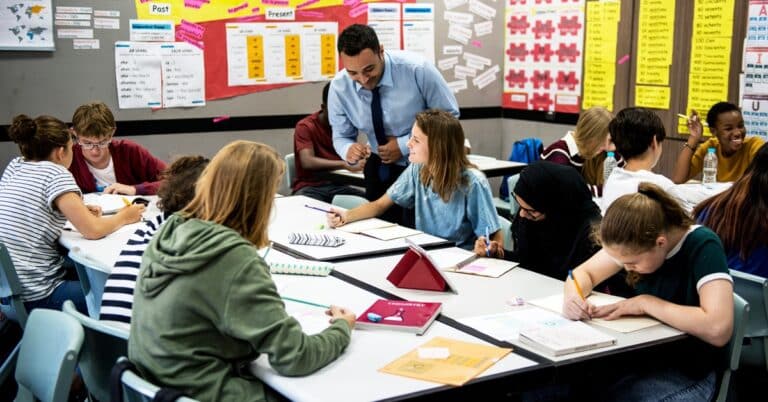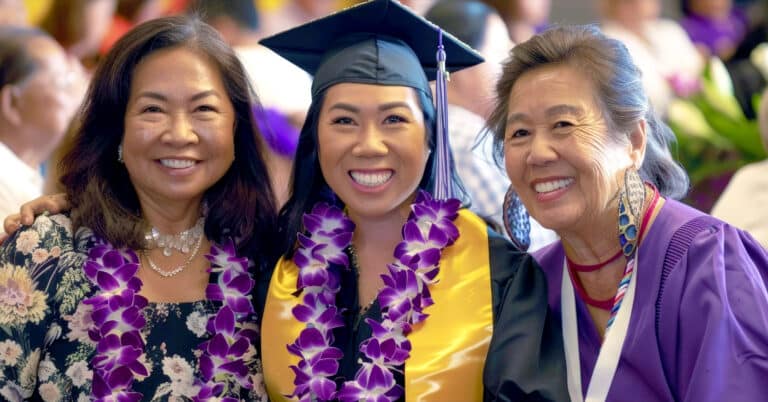When it comes to whole child supports, school districts, families and communities should have a reciprocal relationship.
To ensure their services are beneficial, school districts must design their whole child systems with input and collaboration from the families and community members they serve. Once those services are in place, school districts need to inform families and community members how to access them and collect their feedback on how those services can be improved. Keeping families and community members engaged is central to creating beneficial, accessible whole child systems.
A whole child-focused approach to education has the power to transform the lives of students and their families. Through this approach, schools across Ohio are becoming centers of safety and positivity, where students trust that their needs will be honored and cared for, that they will be challenged to be their best selves personally and academically and that they will be supported no matter their background or circumstances.
KnowledgeWorks is committed to building a learning culture where schools, districts, social service agencies, health care providers, community organizations and others work together to ensure that young people in their communities have every opportunity to thrive.
This story is one in a thematic series that highlights the strategic and practical considerations, challenges and success factors that characterize efforts to comprehensively meet the needs of children in and out of the classroom. Centering on the experiences of six districts located in a diverse array of Ohio communities, these stories show what is possible when we care for our students as people while fulfilling the educational mission of our schools.
Cultivating trust with families
Establishing meaningful connections with busy, overburdened families can seem like a daunting task for school districts. But a simple approach to connecting with families and reducing barriers to access is to offer them services they already need and communicate through channels they’re familiar with.
At Beavercreek City Schools, outside of Dayton, on-site health counselors were able to provide proactive outreach to caregivers of students that district data indicated could potentially benefit from additional support. These 1:1 interactions helped to remove apprehension to accessing services and gave families the opportunity to engage with the district before problems arose. This built trust with families and increased the likelihood of families using the services the schools offer.
In addition to this targeted outreach, Beavercreek City Schools uses multiple methods to engage with their students’ families more broadly. Schools regularly host parent nights for families, educators and service providers to connect with each other on school campuses and send out written communications about available services through newsletters and social media.
Wickliffe City Schools, outside of Cleveland, aimed to reduce barriers to access for a family resource center that offered a range of whole child services by ensuring their resources were available for free for students and families. This included incidental expenses such as transportation, for which Uber gift cards were provided to families in need.
But a simple approach to connecting with families and reducing barriers to access is to offer them services they already need and communicate through channels they’re familiar with.
Creating community partnerships
School district leaders are already well-positioned and respected as changemakers within their communities. But convincing local agencies and community members to participate sometimes requires district leaders to be flexible and innovative in their approach.
In the case of Wickliffe, their initial outreach to community members about building their family resource center was met with concern due to a lack of evidence. After receiving a local government innovation grant, the district performed a feasibility study that showed a clear need and demand for whole child services. Once they had their evidence, community support came pouring in: The nearby community college helped them to secure a state capital grant; a resident architect provided building plans at no cost; and a local furniture company donated all the furniture needed.
Strong connections to families and community members generates sustainability
One of the largest barriers to success for whole child systems is funding, both in the initial set-up phases and on an ongoing basis. By creating meaningful connections with families and community members, school districts can alleviate some of those barriers and create pipelines for long term sustainability.
In the midst of dramatic population changes at their schools, Athens City School District in southeast Ohio turned to their community to vote in favor of a bond measure that would allow them to build new facilities that would better serve students and their vision for a more effective, equitable district. The bond was not without opposition: Groups that feared increased property taxes and overpowered schools were vocal in their resistance to the bond. But through connecting directly with students’ families and strong partnerships with community agencies, Athens City School district prevailed in getting the bond approved by voters. This outreach included community meetings hosted by the Athens County Foundation, which used specific methods of engagement to ensure all voices felt seen and heard. The funds generated by the bond were used to build two new preschool facilities and remodel existing buildings to better fit students’ needs.
Get the full story
Ohio’s whole child-focused approach to education has the power to transform the lives of students and their families. Learn how districts in the state:




